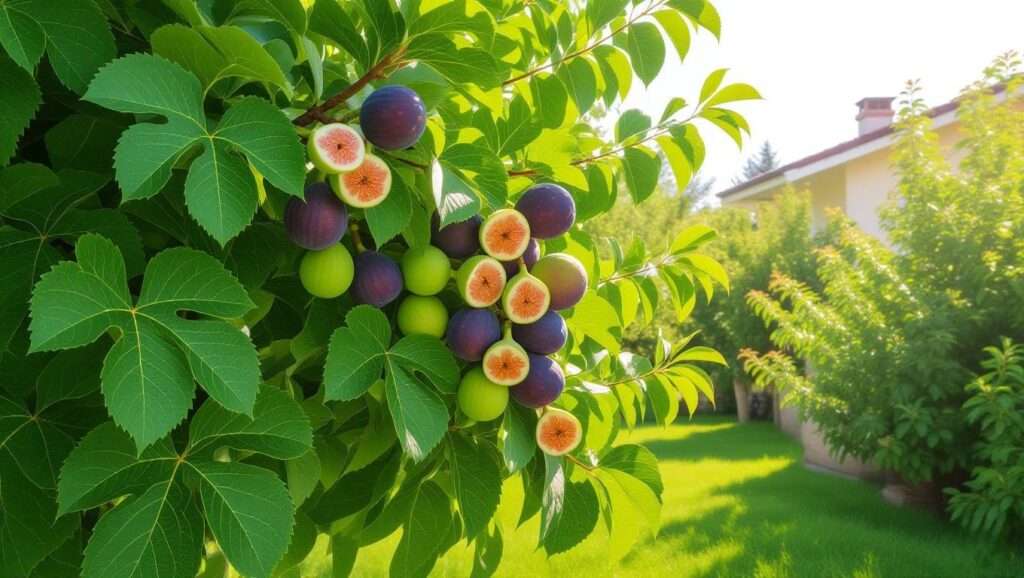Imagine stepping into your backyard on a warm summer morning, plucking a ripe, juicy fig from your own tree, and savoring its sweet, honey-like flavor. This dream is within reach with proper edible fig tree care. Growing fig trees at home is a rewarding journey, offering both delicious fruit and lush, ornamental foliage. Yet, many gardeners struggle with sparse yields or unhealthy trees due to common care mistakes. As a horticulturist with years of experience cultivating figs in diverse climates, I’ve compiled this comprehensive guide to help you master edible fig tree care. From planting to harvesting, you’ll find expert-backed, actionable tips to ensure a thriving tree and a bountiful harvest. Let’s dig in! 🌳
1. Why Grow Edible Fig Trees? 🍎
1.1 Benefits of Fig Trees for Home Gardeners
Fig trees (Ficus carica) are a fantastic addition to any garden. Their fruit is packed with fiber, potassium, and antioxidants, making them a healthy snack. Beyond nutrition, figs offer aesthetic charm with their broad, lobed leaves and compact growth, perfect for small yards or patios. They’re also relatively low-maintenance compared to other fruit trees, thriving in various climates with the right care. Whether you’re a novice or seasoned gardener, figs reward your efforts with abundant harvests and year-round beauty.
1.2 Popular Edible Fig Varieties
Choosing the right variety is key to successful fig tree maintenance. Here are some top picks:
- Black Mission: Known for its dark purple skin and sweet, rich flavor; ideal for USDA zones 7-10.
- Brown Turkey: Hardy and versatile, producing large, brownish figs with a mild taste; great for cooler climates.
- Celeste: Small, sweet figs with a closed eye, resistant to splitting; perfect for humid regions.
| Variety | Fruit Size | Flavor | Climate Suitability |
|---|---|---|---|
| Black Mission | Medium-Large | Sweet, rich | Zones 7-10 |
| Brown Turkey | Large | Mild, sweet | Zones 7-9 |
| Celeste | Small-Medium | Very sweet | Zones 6-9 |
Expert Tip: Select a variety suited to your USDA hardiness zone to ensure optimal growth and fruit production. Check your zone at USDA Plant Hardiness Zone Map.
2. Understanding Edible Fig Tree Basics 🌳
2.1 Fig Tree Biology and Growth Cycle
To master edible fig tree care, understanding the tree’s biology is essential. Fig trees are deciduous, entering dormancy in late fall and resuming growth in spring. They produce two crops annually in warm climates: the breba crop (early summer, from last year’s growth) and the main crop (late summer to fall). Most common varieties, like Brown Turkey, are self-pollinating, eliminating the need for a wasp-pollinated caprifig. However, proper care ensures these cycles yield abundant fruit.
2.2 Ideal Growing Conditions
Fig trees thrive in Mediterranean-like conditions but are adaptable with the right setup:
- Climate: Best in USDA zones 7-10, though some varieties tolerate zone 6 with protection.
- Soil: Well-draining, loamy soil with a pH of 6.0-6.5. Avoid heavy clay to prevent root rot.
- Sunlight: Full sun (6-8 hours daily) is critical for robust fruit production.
Case Study: A gardener in zone 6 successfully grew a Celeste fig by planting it against a south-facing wall, leveraging reflected heat to mimic warmer conditions. This highlights the importance of strategic site selection.
3. Planting Your Edible Fig Tree 🌱
3.1 Choosing the Right Location
The foundation of growing figs at home is selecting the perfect spot. Choose a location with:
- Full Sun: At least 6 hours of direct sunlight daily.
- Shelter: Protection from strong winds to prevent branch damage.
- Space: Account for mature size (10-20 feet tall and wide for in-ground trees).
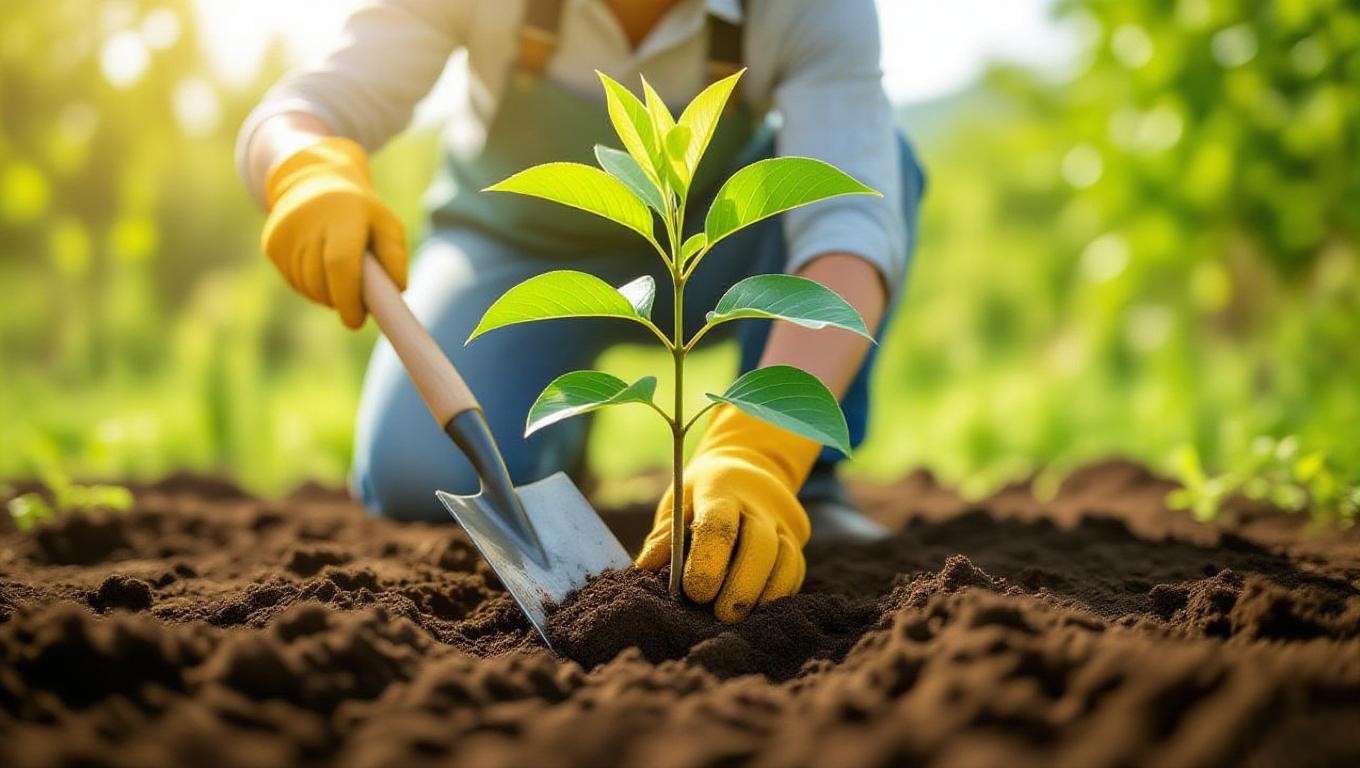
Avoid low-lying areas prone to frost pockets, as figs are sensitive to late spring frosts.
3.2 Step-by-Step Planting Guide
Follow these steps for successful planting:
- Timing: Plant in early spring or late fall when the tree is dormant.
- Prepare the Hole: Dig a hole twice as wide and as deep as the root ball. Mix in compost to improve soil fertility.
- Planting: Place the tree so the root crown is level with the soil surface. Backfill with soil, tamping gently to remove air pockets.
- Watering: Water deeply after planting to settle the soil.
3.3 Container vs. In-Ground Planting
For colder climates or limited space, consider container planting:
- Container Size: Use a 15-20 gallon pot with drainage holes.
- Soil Mix: Combine potting soil with perlite and compost for drainage and nutrients.
- Benefits: Containers allow mobility to protect trees from frost.
Pro Tip: Add a layer of organic compost around the base after planting to retain moisture and enrich the soil.
4. Essential Care Tips for Healthy Fig Trees 🌞
4.1 Watering Requirements
Proper watering is critical for fig tree maintenance. Young trees need consistent moisture to establish roots:
- Frequency: Water deeply 1-2 times per week, depending on rainfall and soil drainage.
- Signs of Overwatering: Yellowing leaves or soggy soil indicate root rot risk. Ensure proper drainage.
Mature trees are drought-tolerant but produce better fruit with regular watering during dry spells.
4.2 Fertilizing for Optimal Growth
Fertilizing supports vigorous growth and fruit production:
- Type: Use a balanced fertilizer (e.g., 10-10-10) or organic options like compost or aged manure.
- Schedule: Apply in early spring as growth begins and again in mid-summer.
- Avoid Over-Fertilizing: Excess nitrogen can lead to lush foliage but fewer fruits.
4.3 Pruning for Productivity
Pruning shapes the tree and boosts yields:
- When: Prune in late winter or early spring during dormancy.
- How: Remove dead or crossing branches, thin crowded areas, and cut back 1/3 of older wood to encourage new growth.
- Tools: Use clean, sharp pruning shears to prevent disease.
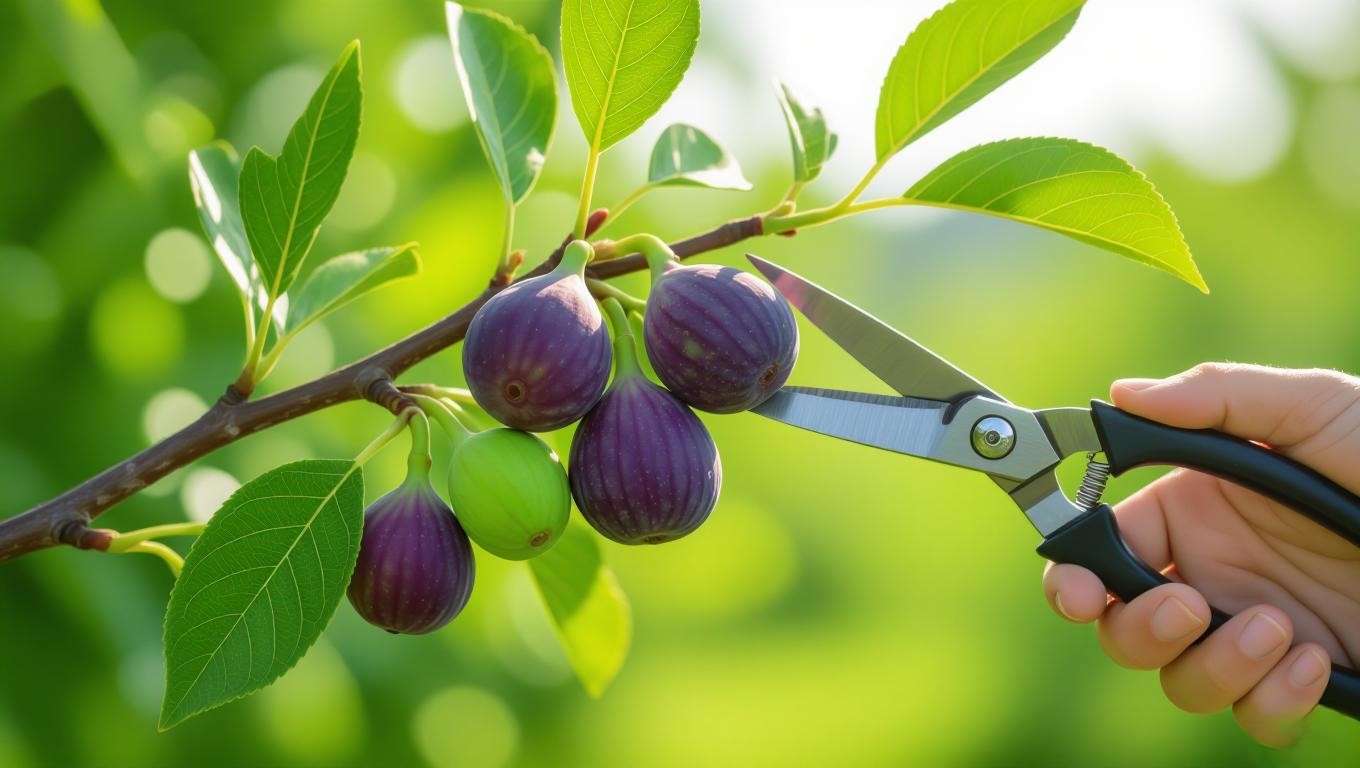
Expert Insight: Over-pruning can reduce fruit yield. Focus on light, strategic cuts to maintain an open canopy for sunlight and air circulation.
5. Protecting Your Fig Tree from Pests and Diseases 🐞
5.1 Common Pests
Healthy edible fig tree care includes proactive pest management. Common pests include:
- Fig Beetles: These shiny green beetles feed on ripe fruit. Control them by picking fruit early and using traps or netting.
- Aphids: Small sap-sucking insects that cause leaf curling. Spray with neem oil or insecticidal soap for organic control.
- Spider Mites: Tiny pests causing stippled leaves. Increase humidity and use a strong water spray to dislodge them.
Regularly inspect leaves and fruit for early signs of infestation to keep your tree thriving.
5.2 Common Diseases
Fig trees are susceptible to a few diseases, but proper care minimizes risks:
- Root Rot: Caused by overwatering or poor drainage. Ensure well-draining soil and avoid waterlogging.
- Leaf Spot: Fungal spots on leaves, often due to excessive moisture. Improve air circulation and remove affected leaves.
- Rust: Orange pustules on leaves, treatable with fungicides or by removing infected foliage.
Prevention Tip: Maintain good sanitation by clearing fallen leaves and debris around the tree base to reduce disease spread.
5.3 Winter Protection
In colder climates (zones 6 or below), winter protection is essential for fig tree maintenance:
- Mulching: Apply a 4-6 inch layer of organic mulch (e.g., straw or wood chips) around the base to insulate roots.
- Wrapping: Use burlap or frost blankets to cover young trees or exposed branches during freezing temperatures.
- Potted Figs: Move containers to a garage or indoors near a sunny window when temperatures drop below 20°F (-6°C).

FAQ: How do I protect my fig tree from frost damage? Wrap the tree in burlap and mulch heavily around the base. For severe winters, consider a temporary greenhouse structure.
6. Harvesting and Enjoying Your Figs 🍇
6.1 When and How to Harvest
Knowing when to harvest is key to enjoying the fruits of your edible fig tree care:
- Signs of Ripeness: Figs are ready when they’re soft, slightly drooping, and richly colored (varies by variety—purple for Black Mission, brown for Brown Turkey).
- Harvesting Technique: Gently twist figs off the stem to avoid damaging the tree. Wear gloves if sap irritates your skin.
- Timing: Check daily during peak season (late summer to fall) as figs ripen quickly.
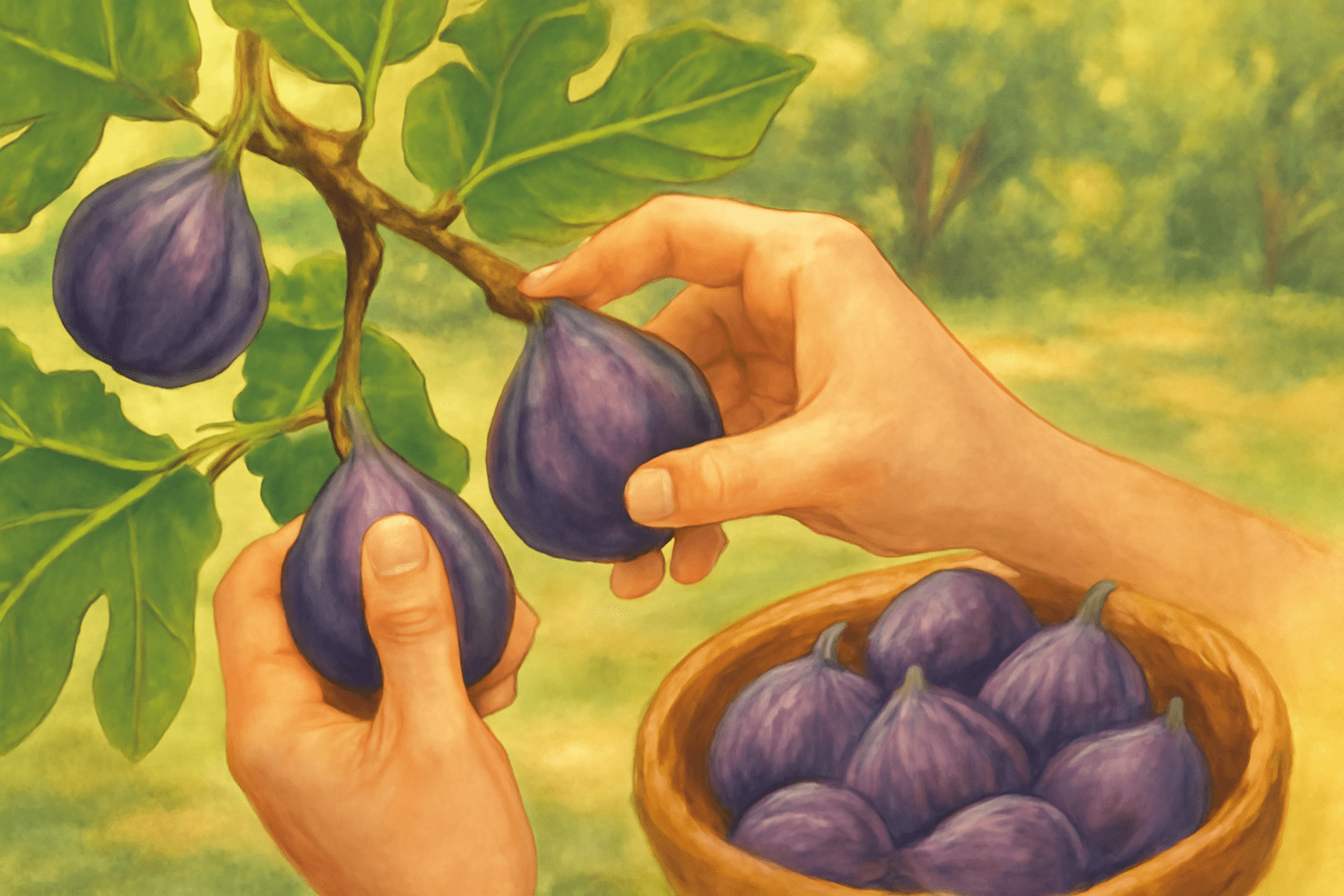
6.2 Storing and Using Figs
Fresh figs are a treat, but they don’t last long:
- Short-Term Storage: Refrigerate figs in a breathable container for up to 7-10 days.
- Preservation: Dry figs in a dehydrator, freeze them for smoothies, or make jams and preserves.
- Recipe Ideas:
- Fig and Goat Cheese Salad: Combine fresh figs, arugula, goat cheese, and walnuts with a balsamic drizzle.
- Fig Jam: Simmer figs with sugar and lemon juice for a versatile spread.
- Baked Figs: Halve figs, drizzle with honey, and bake for a warm dessert.
Reader Engagement: Got a favorite fig recipe? Share it in the comments below to inspire other gardeners! 🍴
7. Troubleshooting Common Fig Tree Problems 🛠️
7.1 Why Isn’t My Fig Tree Fruiting?
A common frustration in growing figs at home is a lack of fruit. Possible causes include:
- Insufficient Sunlight: Ensure 6-8 hours of direct sun daily.
- Improper Pruning: Over-pruning can remove fruiting wood. Follow light pruning guidelines (see section 4.3).
- Young Tree: Most figs take 2-3 years to bear fruit. Be patient with newly planted trees.
- Pollination Issues: Confirm your variety is self-pollinating; otherwise, a caprifig may be needed.
Solution: Relocate potted trees to sunnier spots, adjust pruning, and verify variety needs with a local nursery.
7.2 Leaf Drop or Yellowing
Leaf issues signal care problems:
- Overwatering: Check soil moisture; let the top inch dry out between waterings.
- Nutrient Deficiency: Yellow leaves may indicate nitrogen or potassium shortages. Apply a balanced fertilizer.
- Pest Damage: Inspect for aphids or spider mites and treat promptly.
Case Study: A gardener in California noticed leaf drop on their Brown Turkey fig. After reducing watering frequency and applying compost, the tree recovered within weeks, producing a robust harvest the following season.
8. Advanced Tips for Maximizing Fig Tree Yields 🌟
8.1 Training Fig Trees for Shape and Productivity
Advanced edible fig tree care involves training for optimal growth:
- Espalier: Train branches against a wall or trellis to save space and improve sunlight exposure.
- Fan-Training: Spread branches in a fan shape to enhance air circulation and ease harvesting.
- Benefits: Trained trees produce more accessible fruit and are easier to maintain.
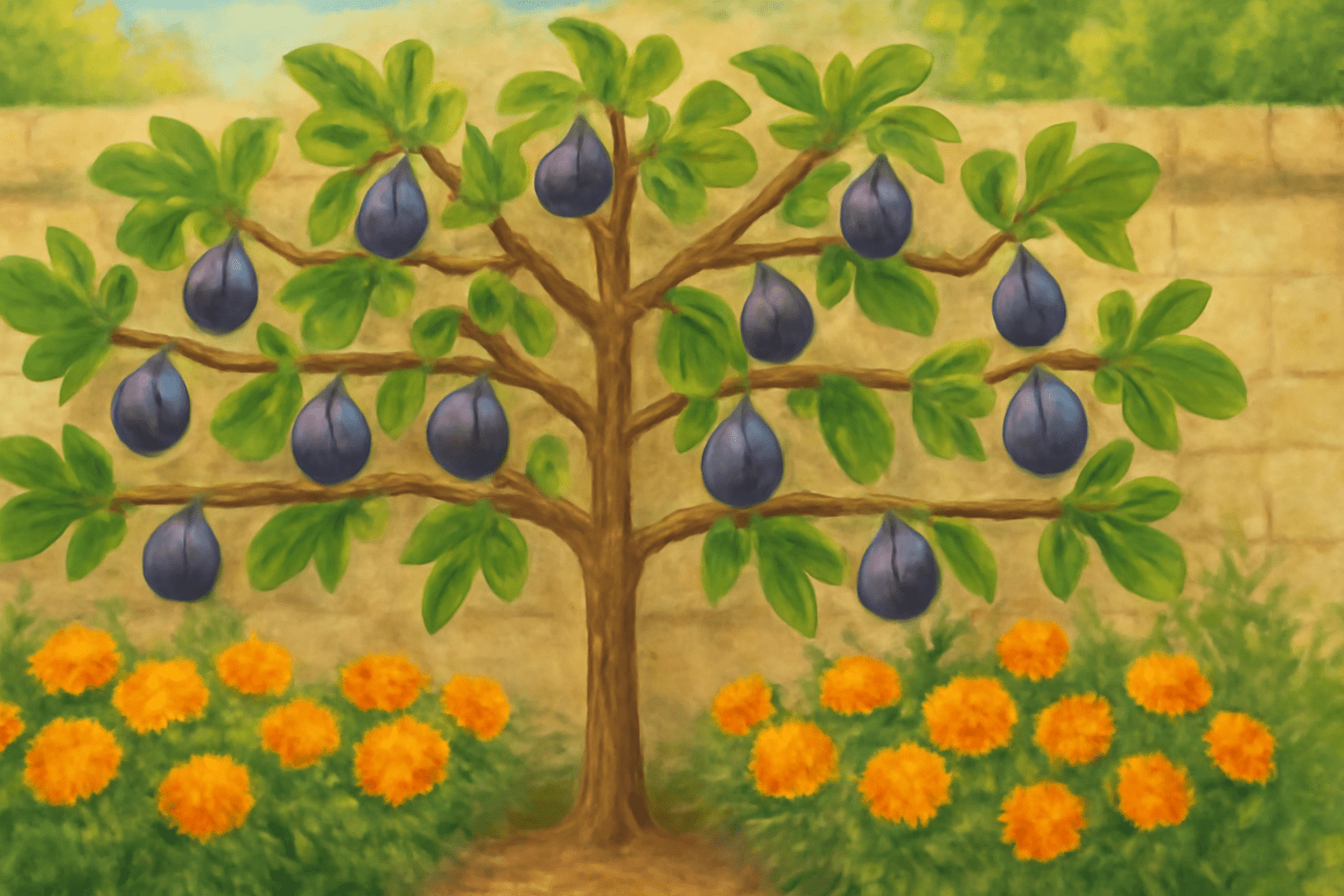
How-To: Secure young branches to a support structure using soft ties, pruning annually to maintain shape.
8.2 Companion Planting
Companion plants can boost fig tree health:
- Beneficial Companions: Lavender, marigolds, or nasturtiums deter pests like aphids and attract pollinators.
- Plants to Avoid: Walnuts, which release juglone, a toxin harmful to figs.
Expert Insight: A professional orchardist in Oregon reported a 20% yield increase after planting marigolds near fig trees, citing reduced pest pressure.
9. FAQs About Edible Fig Tree Care ❓
Q1: How long does it take for a fig tree to bear fruit?
Most fig trees produce fruit within 2-3 years of planting, with full production by year 5 if properly cared for.
Q2: Can fig trees grow in cold climates?
Yes, with protection. Choose hardy varieties like Celeste and use mulching or container planting to overwinter in zones 6 or below.
Q3: How do I know if my fig tree needs more water?
Check soil moisture 2 inches deep. If dry, water deeply. Wilting leaves during hot weather also signal thirst.
Q4: What’s the best way to propagate a fig tree?
Take 6-8 inch cuttings from healthy, dormant branches in late winter. Root in moist soil or water with rooting hormone for best results.
Conclusion 🌴
Mastering edible fig tree care unlocks the joy of homegrown figs, from planting to savoring your harvest. By choosing the right variety, providing optimal conditions, and following expert care tips—watering, fertilizing, pruning, and pest control—you’ll ensure a thriving tree and abundant fruit. Start your fig-growing journey today, and share this guide with fellow gardeners to spread the love of figs! 🌳 Explore our other plant care articles or join our newsletter for more tips. With patience and care, your fig tree will reward you with sweet, juicy bounty for years to come.

